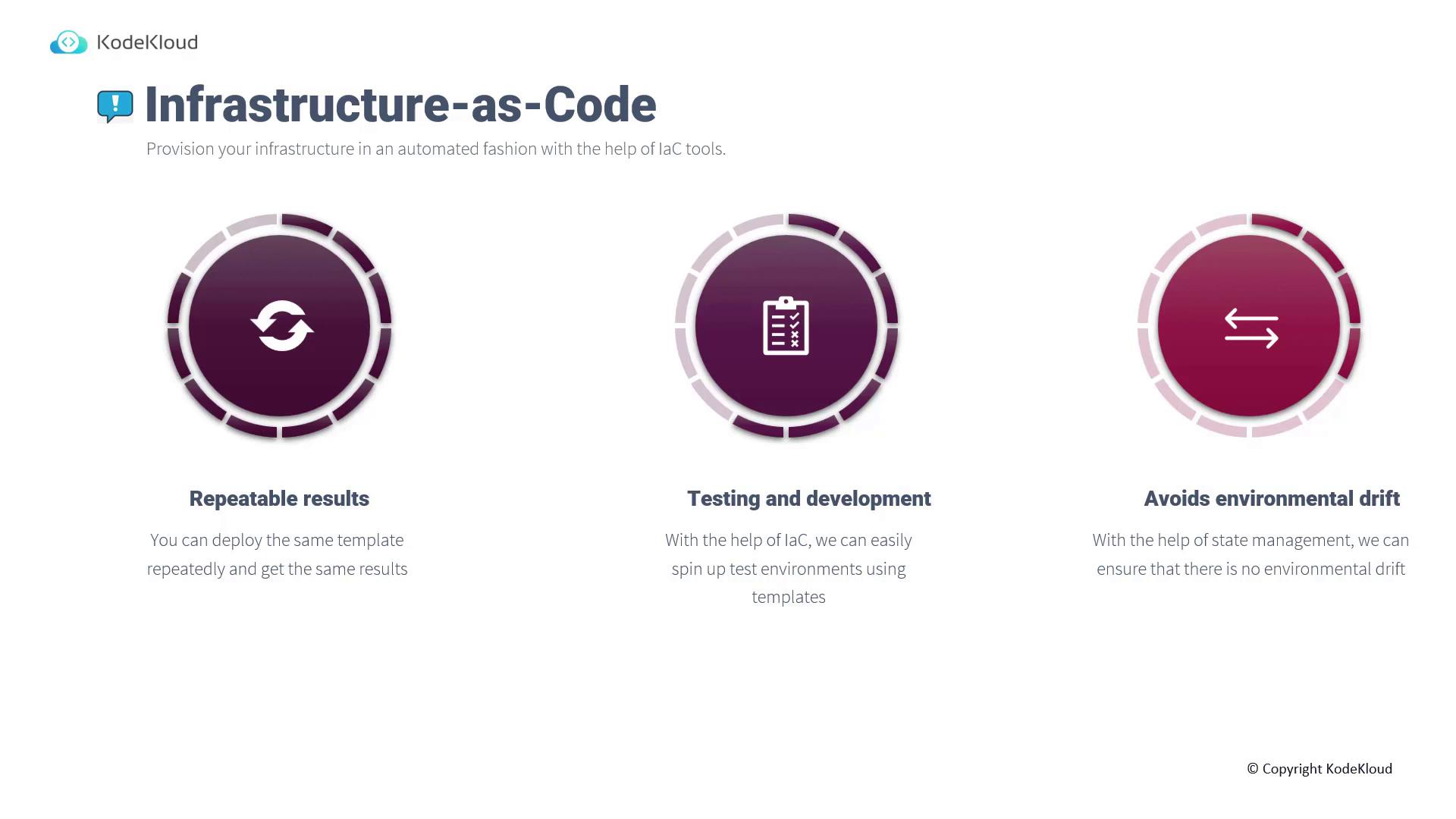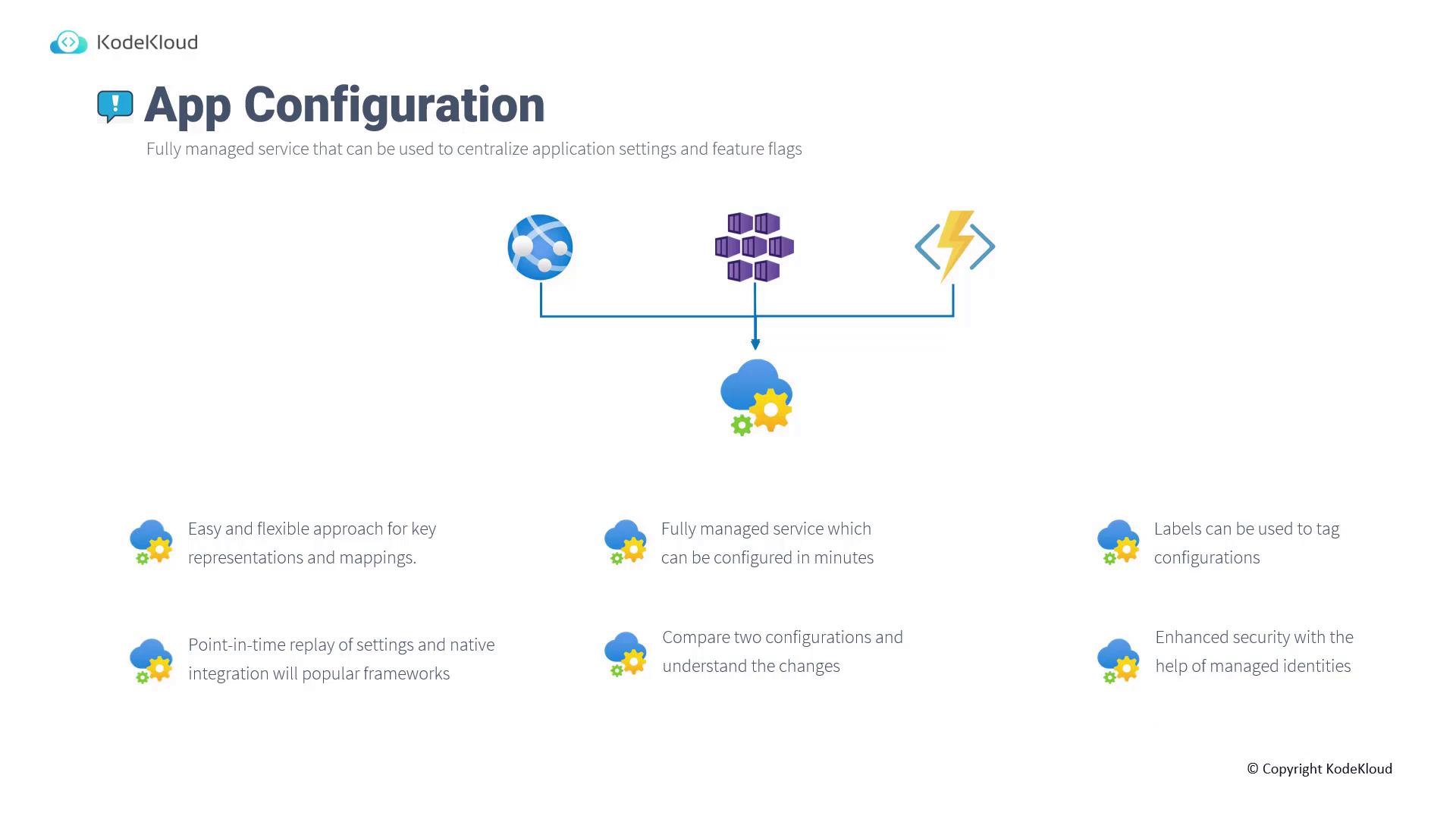AZ-305: Microsoft Azure Solutions Architect Expert
Design an app architecture solution
Design an application lifecycle
In this article, we explore various Infrastructure as Code (IaC) solutions—such as ARM templates, Bicep, Azure Automation, and Terraform—and demonstrate how they enable automated, consistent, and repeatable deployment of your infrastructure.
Why Use Infrastructure as Code?
IaC not only streamlines deployment but also enhances testing capabilities and minimizes configuration drift. Here’s why implementing IaC is essential:
Repeatable Results
IaC empowers you to deploy the same environment repeatedly with guaranteed consistency. For example, if your infrastructure spans hundreds of servers, executing an IaC template will set up an identical environment every single time.
Note
With IaC, manual errors are reduced and infrastructure standards are maintained across all deployments.
Testing and Development
Provisioning a new test environment can be time-consuming and error-prone when done manually, especially when it involves multiple resources such as virtual machines, databases, and storage accounts. IaC simplifies this process by automatically provisioning all necessary resources with a single deployment.
Avoiding Environmental Drift
Most IaC tools include state management features that help maintain the desired configuration of your environments. If any changes occur over time, reapplying the template ensures that your infrastructure returns to its defined state.

Available Infrastructure as Code Solutions
Below are some popular IaC tools, each offering unique benefits and use cases:
ARM Templates
ARM templates are Azure’s native solution for workload deployments. They leverage a declarative JSON syntax to define infrastructure, and they integrate seamlessly with Azure’s ecosystem. In earlier sessions, we detailed how Visual Studio extensions improve the development of robust ARM templates.
Bicep Templates
Bicep is a modern, more user-friendly option that acts as an abstraction layer for ARM templates. It simplifies the development process with a domain-specific language, providing:
- Azure-native support crafted by Microsoft
- Seamless integration into Azure deployment workflows
- An easier learning curve compared to JSON-based templates
Deploying resources with Bicep can significantly enhance readability and maintainability of your infrastructure code.
Azure Automation
Beyond infrastructure provisioning, Azure Automation extends capabilities to:
- Process automation: Schedule and execute scripts to manage routine tasks.
- Configuration management: Enforce desired state configurations across systems.
- Update management: Automate updates to ensure your virtual machines remain current with the latest patches.
Terraform
Terraform is a cloud-agnostic IaC tool that supports providers like AWS, Azure, GCP, and on-premises environments. Using HashiCorp Configuration Language (HCL), Terraform is ideal for multi-cloud deployments, thanks to its flexibility and robust community support.

While other tools like Chef, Jenkins, and Ansible also offer valuable functionalities, the IaC solutions discussed here are among the most widely adopted. ARM templates have long been a favorite, though Bicep is quickly gaining popularity for Azure-specific deployments. Meanwhile, Terraform remains a strong choice for those embracing multi-cloud strategies.
App Configuration
App Configuration is a fully managed service designed to centralize and secure your application settings and feature flags. This service allows you to store configurations in one place while supporting authentication via Azure Active Directory (Azure AD) or Managed Identities.
Key Benefits of App Configuration
- Centralized Storage: Consolidate settings for web apps, AKS clusters, function apps, and more into a single, manageable location.
- Flexible Key-Value Mappings: Organize settings with labels, enabling various versions (e.g., V1, V2, V3) for streamlined updates.
- Point-in-Time Replay: Track and compare configuration changes over time, similar to version control systems like GitHub.
- Enhanced Security: Secure access using either access keys or Azure AD authentication in combination with managed identities.

Any service capable of using a managed identity can authenticate with App Configuration, making it an effective solution for managing application configurations across diverse Azure services.
Conclusion
In this module, we examined a diverse range of IaC solutions and their roles in achieving repeatable deployments, efficient testing, and reliable configuration management. Whether you opt for ARM templates, Bicep, Azure Automation, or Terraform, each tool provides distinct advantages that can be tailored to your specific infrastructure needs.
This concludes our discussion on designing and managing the application lifecycle using Infrastructure as Code.
Watch Video
Watch video content